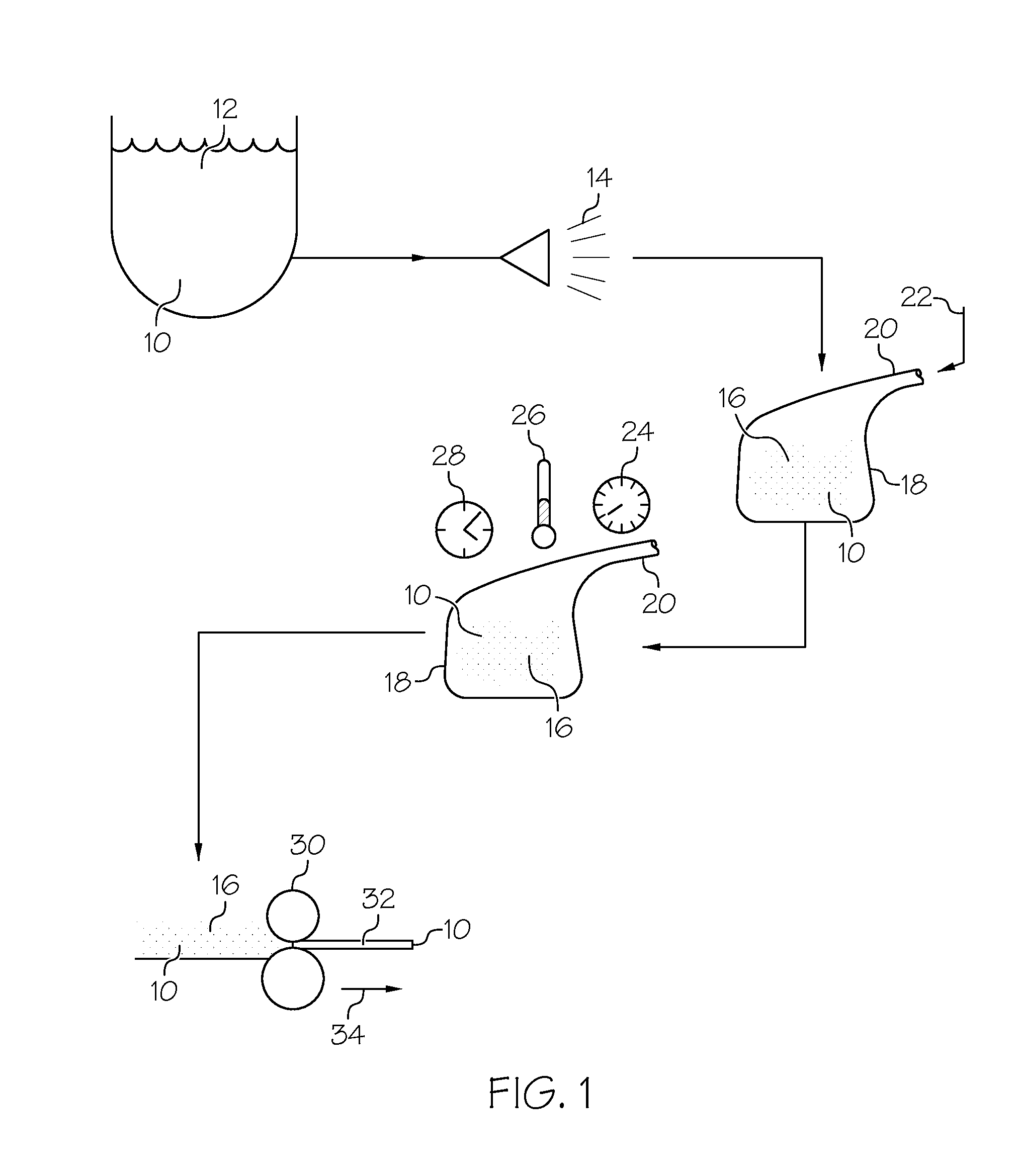Aluminum iron based alloys and methods of producing the same
- Summary
- Abstract
- Description
- Claims
- Application Information
AI Technical Summary
Benefits of technology
Problems solved by technology
Method used
Image
Examples
Embodiment Construction
[0010]The following detailed description is merely exemplary in nature and is not intended to limit the various embodiments or the application and uses of the invention. Furthermore, there is no intention to be bound by any expressed or implied theory presented in the preceding technical field, background, brief summary, or the following detailed description.
[0011]Referring to the FIGURE, a method for producing an aluminum iron based alloy 10 is provided in accordance with an exemplary embodiment. The method includes melting an aluminum iron based alloy (Al / Fe alloy) 10 to form a melt 12. Certain aluminum iron based alloys 10, such as Al / Fe alloy 10, are strengthened by dispersoids present in the metal. The dispersoids are formed when a melt 12 is rapidly cooled and solidified, and these Al / Fe alloys 10 are sometimes referred to as rapidly solidified (RS) alloys, as mentioned above. The Al / Fe alloys 10 are initially formed by combining the desired components in a molten state. Such ...
PUM
| Property | Measurement | Unit |
|---|---|---|
| Time | aaaaa | aaaaa |
| Time | aaaaa | aaaaa |
| Time | aaaaa | aaaaa |
Abstract
Description
Claims
Application Information
 Login to view more
Login to view more - R&D Engineer
- R&D Manager
- IP Professional
- Industry Leading Data Capabilities
- Powerful AI technology
- Patent DNA Extraction
Browse by: Latest US Patents, China's latest patents, Technical Efficacy Thesaurus, Application Domain, Technology Topic.
© 2024 PatSnap. All rights reserved.Legal|Privacy policy|Modern Slavery Act Transparency Statement|Sitemap


